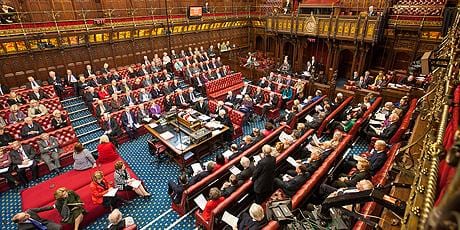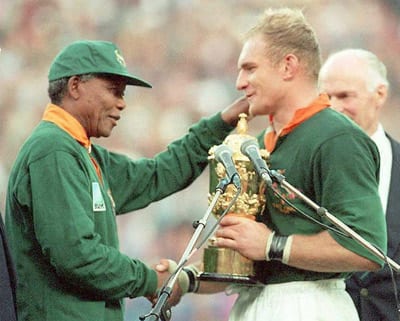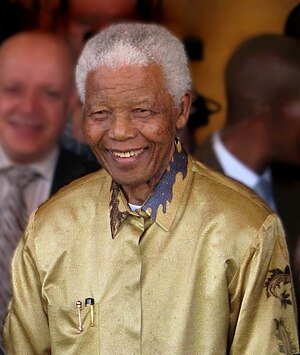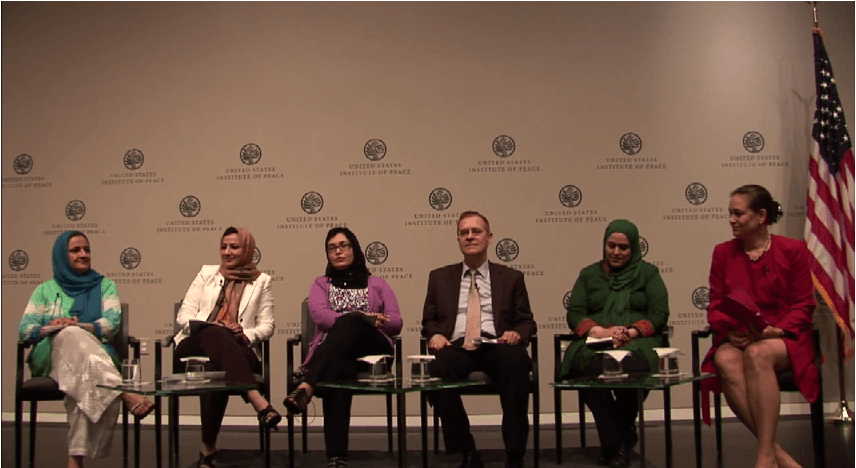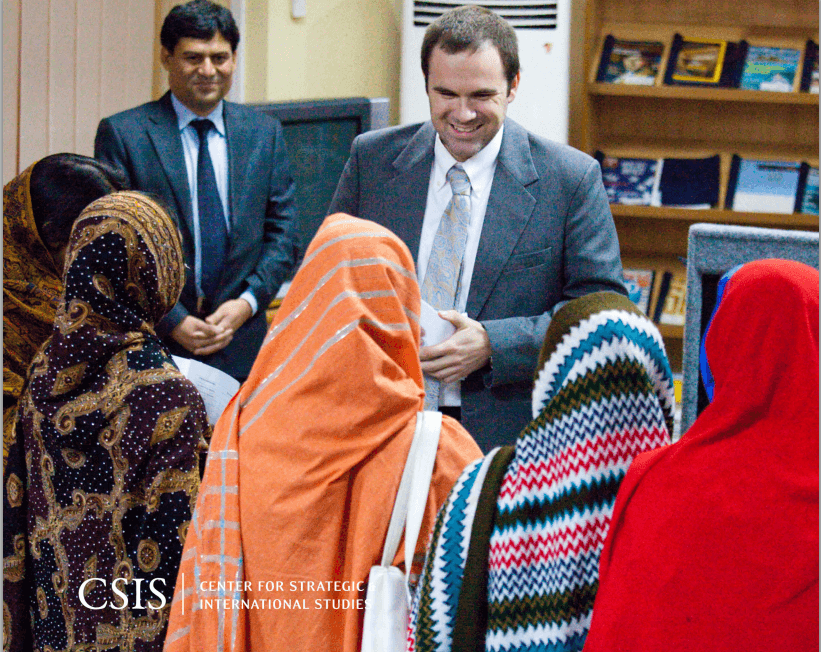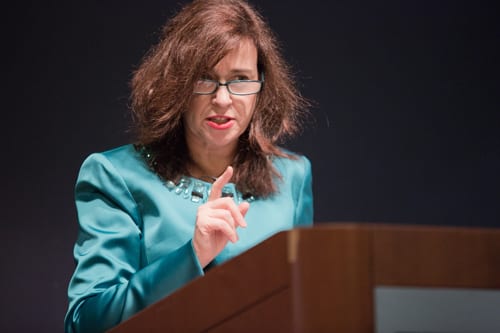GW School of Media and Public Affairs and Georgetown Adjunct Assistant Professor Bruce Gregory compiles an annotated bibliography of Public Diplomacy-related readings and other resources. Intended for teachers of public diplomacy and related courses, here is an update on resources that may be of general interest. Suggestions for future updates are welcome and should be directed to Bruce Gregory at BGregory@gwu.edu.
Read the full archive for Bruce Gregory’s Public Diplomacy Resources.
Intended for teachers of public diplomacy and related courses, here is an update on resources that may be of general interest. Suggestions for future updates are welcome.
Christopher Anzalone, “The Nairobi Attack and Al-Shabab’s Media Strategy,” CTC Sentinel, October 2013, Vol. 6, Issue 10. Anzalone (McGill University) looks at al-Shabab’s media strategy using micro-blogging on Twitter and audio statements by the group’s leaders during and after the Westgate Mall attack in Nairobi, Kenya. His article compares al-Shabab’s recent campaign with past campaigns, evaluates technologies and message content, and discusses both in the context of ongoing conflict in Somalia.
Daryl Copeland, Diplomacy, Globalization and Heteropolarity: The Challenge of Adaptation, Canadian Defence & Foreign Affairs Institute (CDFAI), August 2013. Copeland (CDFAI Senior Fellow and author of Guerrilla Diplomacy) continues his call for radical reform in “key elements of the diplomatic ecosystem” – foreign ministries, the Foreign Service, and the “diplomatic business model.” His paper, a case study with findings and recommendations for Canada’s diplomacy, is grounded in his views on globalization as “the defining historical process of our times” and an emerging “heteropolar world” (by which he means “more differences than similarities among competing sources of power”). Copeland’s conclusion: “Canada’s diplomatic ecosystem is in a perilous state and Canadian interests are suffering.”
Henry Farrell and Martha Finnemore, “The End of Hypocrisy: American Foreign Policy in the Age of Leaks,” Foreign Affairs,November/December 2013, 22-26. In this concise, sharply argued article, Farrell and Finnemore (George Washington University) defend their claim that hypocrisy has been “central to Washington’s soft power” but getting much harder to ignore in the context of WikiLeaks and disclosures of Edward Snowden. Greater transparency means it’s harder for allies to overlook US double standards when its deeds clash with the government’s public rhetoric — and easier for adversaries to justify their own double standards. Cases include: US cyberattacks against China, monitored global Internet communications, bugged European institutions and leaders, tacit acceptance of Israel’s nuclearization, acceptance of India’s non-participation in the Nuclear Proliferation Treaty, refusing to call Egypt’s coup a coup, sweeping exceptions to human rights standards when US safety is threatened. “The collapse of hypocrisy,” they argue, presents the US with hard choices. “The era of easy hypocrisy is over.”
Jessica C. E. Gienow-Hecht and Mark C. Donfried, eds., Searching for a Cultural Diplomacy (Berghahn Books, 2010, 2013). These historical case studies, compiled by Gienow-Hecht (University of Cologne) and Donfried (Institute for Cultural Diplomacy, a non-profit organization based in New York City) examine approaches to cultural diplomacy in regions other than the United States and “western” countries. The editors conceptual framework is grounded in three assumptions: (1) The more distance between the agent of cultural diplomacy and a government’s political and economic agendas, the more likely it is to succeed. (2) The more interactive the cultural diplomacy program, the more likely it is to succeed. (3) States should employ diverse means for short and long-term strategic goals and a variety of bilateral and multilateral relations. Chapters offer a wide range of cultural diplomacy definitions and a variety of structural and conceptual approaches. Includes:
— Jessica C. E. Gienow-Hecht, “What Are We Searching For? Culture, Diplomacy, Agents and the State”
— Jessica C. E. Gienow-Hecht and Mark C. Donfried, “The Model of Cultural Diplomacy: Power, Distance, and the Promise of Civil Society”
— Jean-Francois Fayet (University of Geneva), “VOKS: The Third Dimension of Soviet Foreign Policy”
— Rosa Magnusdottir (University of Aarhus), “Mission Impossible? Selling Soviet Socialism to Americans, 1955-1958”
— Aniko Macher (Institut d’Etudes Politiques de Paris), “Hungarian Cultural Diplomacy 1957-1963: Echoes of Western Cultural Activity in a Communist Country”
— Annika Frieberg (Colorado State University), “Catholics in Ostpolitik: Networking and Nonstate Diplomacy in the Bensberger Memorandum, 1966-1970”
— Jennifer Dueck (University of Oxford), “International Rivalry and Culture in Syria and Lebanon Under the French Mandate”
— James R. Vaughn (Aberystwyth University), “The United States and the Limits of Cultural Diplomacy in the Arab Middle East, 1945-1957”
— Yuzo Ota (McGill University), “Difficulties Faced by Native Japan Interpreters: Nitobe Inazo (1962-1933) and His Generation”
— Maki Aoki-Okabi (Japan External Trade Organization), Yoko Kawamura (Seikei University), and Toichi Makita (Oberlin University),
“’Germany in Europe,’ ‘Japan and Asia’: National Commitments to Cultural Relations Within Regional Frameworks”
Alan K. Henrikson, “Sovereignty, Diplomacy, and Democracy: The Changing Character of ‘International’ Representation – From State to Self?” The Fletcher Forum of World Affairs, Vol. 37:3, Special Edition 2013, 111-140. In this article, based on a lecture honoring Fletcher’s former Dean, Stephen W. Bosworth, Henrikson (Fletcher School of Law and Diplomacy) explores central questions in diplomacy’s study and practice. What does representation mean in a digital world of “mass self-communication?” How should we think about diplomatic authority and agency when empowered individuals significantly change the meaning of sovereignty and democracy? Can diplomacy be carried out by all government agencies other than foreign ministries and by citizens outside government? Can public diplomacy be understood to mean “the diplomacy of the public” – not government diplomacy? Henrikson looks at these questions in an imaginative tour d’horizon that includes the thinking of Niccolo Machiavelli, Cardinal Richelieu, Harold Nicolson, Henry Kissinger, Jorge Heine, Paul Sharp, and Manual Castells.
Sue Jansen, “Review – Public Diplomacy in the 21st Century,” e-International Relations, August 26, 2013. Jansen (Muhlenberg College) provides a measured summary and critique of James Pamment’s book New Public Diplomacy in the 21st Century: A Comparative Study of Policy and Practice (Routledge, 2013). Jansen, a skeptic on new public diplomacy theory, concludes Pamment “is a meticulous scholar who provides a methodically rigorous assessment of current PD practices.” Her review combines an assessment of strengths and limitations in his analysis of new public diplomacy with her own reservations about “non-instrumental ‘listening’ campaigns,” which are “agenda driven undertakings” by definition. “Occasionally instrumental listening may produce improvements in the lives of individuals,” she concludes, “but under the discipline of neoliberalism, listening is deployed within a hegemonic framework of discourse surveillance and management.
Sue Curry Jansen, Walter Lippmann: A Critical Introduction to Media and Communication Theory, (Peter Lang Publishing, Inc., 2012). Diplomacy scholars and practitioners who value Walter Lippmann’s many contributions to understanding publics, cognitive framing, media, communication theory, and much more – and who use his indispensable Public Opinion (1922) in public diplomacy courses – will welcome this informed re-assessment of one of the 20th century’s most important thinkers. In her well-written and closely reasoned book, Jansen (Muhlenberg College) urges a full-scale reconsideration of Lippmann’s contributions to media and communication studies. Issues discussed include: why Lippmann matters today, the legacy of problematic assessments of Lippmann by Wilbur Schramm and James Carey, Lippmann’s involvement in World War I propaganda and subsequent turn from Wilsonian idealism to realism, the continued relevance of Lippmann’s views on reason, emotion, identity, news, knowledge as social construct, and “the world outside and pictures in our heads.” Especially useful is her argument that Lippmann and John Dewey were much closer in their ideas about publics, expertise, and dialogue than suggested by conventional thinking about their “debate.”
Daniel Kahneman, Thinking, Fast and Slow, (Farrar, Straus and Giroux, 2011). In this highly readable book, filled with instructive examples, Kahneman (Nobel laureate, Princeton University) summarizes his groundbreaking work on two systems that shape the way we think and make decisions. “System 1 is fast, intuitive, and emotional. System 2 is slower, more deliberative, and more logical.” Kahneman’s lifelong work on the pervasive influence our emotions and intuitive impressions have on thought and behavior – their strengths and limitations – constitutes a major challenge to the rational models of strategy and decision-making that have long been dominant in many fields including diplomacy. Scholars and practitioners will find his ideas relevant to understanding the roles of emotion and reason in all phases of diplomatic practice: the effects of cognitive biases, opinion and media research, framing costs and risks, advising policymakers on communication strategies, planning and implementing advocacy campaigns, and evaluating methods of collaboration and deliberative engagement.
Steven Livingston, Africa’s Information Revolution: Implications for Crime, Policing, and Citizen Security, Research Paper No. 5, Africa Center for Strategic Studies, November 2013. Livingston (George Washington University) looks at ways in which rapid expansion of information and communication technologies (e.g., Twitter, SMS, event mapping, and crowd sourcing capabilities) are creating opportunities to combat Africa’s disproportionately high rates of violent crime. His study examines implications for improved security through more accessible information and empowered civil society organizations – as well as nefarious uses of information technologies by criminal organizations and unaccountable police forces – in Africa’s rural and rapidly urbanizing societies.
Jon Meacham, Thomas Jefferson: The Art of Power, (Random House, 2013). Pulitzer prize winning biographer Meacham adds to the exhaustive shelf on Jefferson with this compelling profile of his genius in wielding political and diplomatic power. Meacham provides numerous insights into Jefferson’s mastery of “emotional and political manipulation” and skills in reaching “the hearts as well as the minds” of publics at home and abroad: listening as a political art, his understanding of public opinion in the context of multiple audiences, use of political “disinformation” against the British when US envoy in France, the politics of personal relationships, his deft projection of power, and his profound grasp of the drivers of reason and persuasion on the one hand and emotion and fear on the other. Particularly useful is Meacham’s discussion of the correlation of perceived threats during a “Fifty Years War” war against the British (from the Stamp Act in 1764 to the Treaty of Ghent in 1815) and America’s development of persuasive and coercive instruments of statecraft.
Stuart Murray, guest editor, “Sports Diplomacy,” The Hague Journal of Diplomacy, Vol. 8, Nos. 3-4, 2013. Articles in this special issue of HJD explore recent interest in theoretical and practical issues in sports diplomacy. As framed by Murray (Bond University), the articles “aim to add theoretical and empirical muscle to the term” and foster discussion between theorists and practitioners. Contributions focus on sports diplomacy as (1) a means governments employ to achieve foreign policy objectives and (2) the diplomacy that occurs when governments and non-state actors engage in international sport. Includes:
— Stuart Murray, “Introduction”
— Andreia Soares e Castro (School of Social and Political Sciences, Lisbon), “South Africa’s Engagement in Sports Diplomacy: The Successful Hosting of the 2010 FIFA World Cup”
— Zang Qingmin (Peking University), “Sports Diplomacy: The Chinese Experience and Perspective”
— Julie M. Bunck (University of Louisville), “Cuban Sports Diplomacy in the Cold War Period: International Identity versus Domestic Realities”
— Prashant Kidambi (University of Leicester), “Sport and the Imperial Bond: The 1911 ‘All India’ Cricket Tour of Great Britain”
— Michele Acuto (University of Oxford), “World Politics by Other Means? London, City Diplomacy, and the Olympics”
— Christopher McMichael (University of the Witwatersrand), “Sporting Mega Events and South-to-South Security: A Comparative Study of South Africa and Brazil”
— William Gaillard (Union of European Football Associations), “Football, Politics and Europe”
Philip Seib, Public Diplomacy and the Media in the Middle East, Paper 6, 2013, CPD Perspectives on Public Diplomacy, USC Center on Public Diplomacy. Seib (University of Southern California) looks at the region’s increasingly sophisticated media environment and “changes in how the Arab world receives and dispenses public diplomacy” since the uprisings in 2011. Informed by recent data on traditional and social media trends and judgments of regional experts, his paper assesses implications for public diplomacy’s principles and methods and US policies and public diplomacy strategies.
James Thomas Snyder, The United States and the Challenge of Public Diplomacy, (Palgrave Macmillan, 2013). Snyder, formerly with the staff of NATO’s Public Diplomacy Division, provides an assessment of US public diplomacy in the 21st century. Self-described as a “book about how the United States can communicate better with the world,” his chapters focus on the work of public diplomats, Presidential rhetoric, US international broadcasting, new information technologies, language education, organizational issues, and the role of the military and public affairs and information operations in adversarial environments.
“Soft Power and the UK’s Influence,” Transcripts of Evidence Sessions, The Select Committee on Soft Power and the UK’s Influence, House of Lords, UK Parliament. The Select Committee’s “Call for Evidence,” issued July 23, 2013, invited representatives of the UK Government, (British Council, BBC World Service,) companies, individuals, and non-state actors to consider how the UK might “develop and employ better the country’s soft power resources to strengthen the UK’s influence abroad” and also how the UK’s soft power is “used by organizations in the private and civil society spheres, as well as the public sector, and how it inter-relates with the role of the armed forces.” Transcripts of seven evidence sessions (with more scheduled for fall 2013) are available online. (Courtesy of Robin Brown)
For comments, see Robin Brown, “What Even (sic) Happened to UK Public Diplomacy Strategy?” July 12, 2013, and “More From the House of Lords on UK Soft Power,” September 5, 2013, Public Diplomacy, Networks and Influence Blog.
“Strategic Public Diplomacy and Communications” and “Broadcasting Board of Governors,” US Senate Subcommittee on State/Foreign Operations, Senate Report 113-081, Department of State, Foreign Operations, and Related Programs Appropriations Bill, 2014. The Subcommittee’s report states concern “with the absence of a coherent and unified strategic public diplomacy and communications effort by the Department of State, USAID, and the BBG.” Because US interests abroad are “adversely impacted,” the Committee calls for the Secretary of State to ensure that the Under Secretary for Public Diplomacy and Public Affairs reviews activities and programs, and makes recommendations in a number of identified areas of concern. The Committee also states its concern “with the dysfunction and poor management of the BBG” and provides legislative authority to the BBG to hire a CEO with “management and oversight responsibilities for all BBG entities.”
Daya Kishan Thussu, Communicating India’s Soft Power: Buddha to Bollywood, (Palgrave Macmillan, 2013). Academic studies of soft power (and public diplomacy) have paid relatively little attention to India. Thussu (University of Westminster, London) does much to remedy this with his informed analysis of India’s rising soft power – its historical context, strengths and limitations, and growing potential. Chapters include: “De-Americanizing Soft Power,” “Historical Context of India’s Soft Power,” “India Abroad: the Diasporic Dividend,” “Software for Soft Power,” “Culture as Soft Power – Bollywood and Beyond,” and “Branding India – a Public-Private Partnership.”
Uptal Vyas, Soft Power in Japan-China Relations: State, Sub-state and Non-state Relations, (Routledge, 2013). Vyas (Ritsumeikan Asia Pacific University, Japan) offers empirical support for soft power as a theoretical concept in three case studies that focus on Japan’s soft power in China. One case looks at activities of the Japan Foundation (a state actor). A second case examines the sister cities relationship between Kobe and Tianjin (sub-state actors). His third case assesses the work of the Japan-China Friendship Association (a non-state actor).
Recent Blogs And Other Short Items of Interest
Don Bishop, “U.S. Public Diplomacy: Three ‘Challenges,’” September 30, 2013, Public Diplomacy Council. “Tara Sonenshine Responds to the ‘Three Challenges’ of U.S. Public Diplomacy,” October 21, 2013, Institute for Public Diplomacy and Global Communication, Take Five Blog. Response also from P.J. Crowley, “The U.S. Public Diplomacy Deficit: Look at What We Do,” October 22, 2013, Take Five Blog.
Rosa Brooks, “Wounded Giant,” August 30, 2013, Foreign Policy Blog.
Robin Brown, “From Bruno Latour to British Foreign Policy via Tony Blair, Part1,” October 8, 2013; Part 2, October 8, 2013, Part 3,October 11, 2013, Part 4, October 15, 2013, Part 5, October 28, 2013; “German Democracy Support in Middle East,” October 2, 2013;“Japan, China and Soft Power,” October 1, 2013; “Reading the 2013 Survey on UK Attitudes to International Priorities,” September 30, 2013; “UK International Education Strategy,” September 26, 2013; “UK Govts Head of Communications Doesn’t Like Press Releases or Strategic Communication,” September 24, 2013; “Nadia von Maltzan on Syrian-Iranian Cultural Diplomacy,” September 23, 2013;“American Hypernationalism and Foreign Influence: A Last Word on Putin,” September 19, 2013; “Five Points on Putin and His New York Times Piece,” September 13, 2013; “Digital Diplomacy: Forget the Hype and Just Get on With It,” September 10, 2013, Public Diplomacy, Networks and Influence Blog.
Frank Bruni, “College’s Identity Crisis,” October 12, 2013, The New York Times.
Damien Cave, “Viewing the US in Fear and Dismay,” October 15, 2013, The New York Times.
Ingrid d’Hooge, “China’s Public Diplomacy Shifts Focus: From Building Hardware to Improving Software,” October 24, 2013, University of Nottingham, China Policy Institute Blog.
Nicholas Dynan, “Chinese Public Diplomacy: Winning Hearts And Minds Abroad Or At Home,” October 16, 2013, USC Center for Public Diplomacy, CPD Blog.
Craig Hayden, “Does Technology Persuade? Questioning Assumptions in US Public Diplomacy (Part I),” October 9, 2012; “Does Technology Persuade? (Part II): Looking to Media Practices for Insight,” October 14, 2013, Intermap Blog.
Jonathan Henick, “Public Diplomacy on the Front Lines of U.S. Foreign Policy,” October 27, 2013, Institute for Public Diplomacy and Global Communication, Take Five Blog.
Christopher R. Hill, “The Limits of Twitter Diplomacy,” August 20, 2013, Project Syndicate Blog.
Parag Khanna, “The End of the Nation-State?” October 12, 2013, The New York Times.
Naomi Leight, “Can an Ancient Artifact Promote Contemporary Dialogue?” October 31, 2013, USC Center for Public Diplomacy, CPD Blog.
James Pamment, “Public Diplomacy and the Third Metric,” August 28, 2013, USC Center for Public Diplomacy, CPD Blog.
Cynthia Schneider, “Missing in Action: What Happened to Washington’s Policy in Egypt?” August 15, 2013, Foreign Policy Blog.
Michael Schneider, Guy Golan, and Michael Ardaiolo, Interview with Michael Schneider on Challenges Facing Under Secretary of State for Public Diplomacy and Public Affairs-designate Richard Stengel, September 23, 2013, Podcast, The Public Diplomat, Syracuse University.
Philip Seib, “The Case for Blowing Things Up,” August 26, 2013, USC Center for Public Diplomacy, CPD Blog.
Jay Wang, “Branding the Cyrus Cylinder,” October 28, 2013, USC Center for Public Diplomacy, CPD Blog.
Gem From the Past
John W. Henderson, The United States Information Agency, (Frederick A. Praeger, Publishers, 1969). Before Nick Cull’s (University of Southern California) path breaking academic studies of USIA (The Cold War and the United States Information Agency, 2008; The Decline and Fall of the United States Information Agency, 2012), most histories of USIA were written by former public diplomacy practitioners. Good accounts, written not as memoirs but with varying degrees of analytical distance, include: Wilson P. Dizard, Jr.,Inventing Public Diplomacy: The Story of the U.S. Information Agency, 2004; Gifford D. Malone, Organizing the Nation’s Public Diplomacy, 1988; Hans N. Tuch, Communicating with the World: U.S. Public Diplomacy Overseas,1990; and Thomas C. Sorensen, The Word War: The Story of American Propaganda, 1968.
John Henderson’s The United States Information Agency is one of the best. An AP reporter who joined the Foreign Service, Henderson served as a public affairs officer in China, Hong Kong, Thailand, Japan and the Philippines. His book, available in used copies, provides a still useful history of USIA’s goals, methods, issues, challenges, organizational changes, and field operations during the Agency’s first twenty-five years. As public diplomacy practitioners commemorate USIA’s 60th anniversary in 2013, honoring the past as they look ahead, this literature is worth remembering.
Current compilations of Diplomacy’s Public Dimension: Books, Articles, Websites are posted at Arizona State University’s COMOPS Journal, George Washington University’s Institute for Public Diplomacy and Global Communication, the University of Southern California’s Center on Public Diplomacy, and the Public Diplomacy Council. For previous compilations, visit Matt Armstrong’sMountainRunner.us website.
